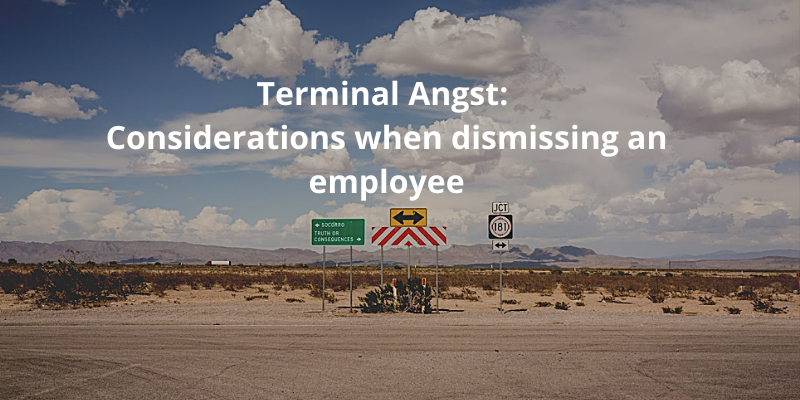Independent Contractor / Consultant / Secondment Agreement


In larger companies, it is not unusual to see employees, independent contractors, consultants, and secondees sitting side by side working together on the same project as a team. They may see each other as “colleagues” yet from a legal and human resource perspective, they are very different types of workers with different legal implications and ramifications.
An employee has a direct employment contract with the host entity and an employment relationship with his/her host employer. Unlike a self-employed worker, employees are usually guaranteed a fixed salary per hour, week, month or other period of time, supplemented by commissions or overtime (if any). The company has direct control the employee’s work by giving instructions. The company also has financial control over the employee and would usually pay the employee directly. Employee income is taxed and usually the company would be required to file the employer tax return with the tax office to confirm how much remuneration has been paid to the employee. The company is also responsible for other employees' benefits, holidays, leave entitlements, medical benefits, insurance, and pensions.
Independent contractor is a legal term that includes all independent workers who are not legally considered as employees. A contractor is a temporary worker for a company and an independent businessman who is self-employed and agrees to sign an agreement to work for the company. The general rule is that a worker is considered a self-employed independent contractor if the company controls only the results and deadline of the work. The contractors would retain the control of the manner of work to be done, including the means and methods used to do the work, the scheduling of the work, the execution of the work, and determining how the setup will be completed within standard and time requirements.
From a legal and tax perspective, the work has been outsourced to independent third parties and there is no need for the company to conduct any tax filings in relation to the contractors. Independent contractors must file their own tax returns and pay their own income tax. The contractors are not entitled to any medical benefits, insurance and other employee benefits from the company. The company will be invoiced by the contractors to pay the agreed fixed fees plus any disbursements on a periodic basis. In addition, independent contractors are free to look for other business opportunities and may work for more than one company.
Independent consultant or advisor is a subset of independent contractors. They are called consultants or advisors rather than contractors because the term more accurately describes the nature of their work. They provide professional or expert advice, advice or services on information or materials in their area of knowledge or training to help the company make decisions or perform tasks. For example, improving efficiency while redefining, eliminating or changing aspects that hinder the overall operation of the company's business. In short, the role of a consultant / advisor is to assess the company's needs and provide professional advice and advice on what needs to be done, while the role of a contractor is usually to actually perform the work.
There is a secondment arrangement when an employee is temporarily relocated by his / her employer to work for a different company, department or location for a period of time (i.e. the secondment period). There are usually the following driving forces behind a secondment:
Secondment helps the secondees to develop a broader perspective on the business and allow them to acquire skills that may prove useful when they return to their usual positions.
From a legal perspective, the secondee will continue to be an employee of the original employer. The company usually enters into a secondment arrangement or agreement with the original employer to reimburse it for the cost of the employee. Many professional firms (e.g. law firms and accounting firms) may charge a premium over the cost of the secondee as a result of the loss of billable hours (which are far higher than the actual cost of the secondee). Alternately, the original employer may end the initial employment agreement with the secondee signing an employment agreement with the new company. In some cases, if the original employment contract is put on hold, a dual employee arrangement can result.
As a result of these complex arrangements, secondment raises important legal issues. Some of the issues that should be addressed in the secondment agreement are as follow:
Not the right document?
Don’t worry, we have thousands of documents for you to choose from:

10 Jun 2022
6 min read

2 Jun 2022
6 min read

27 May 2022
6 min read

20 May 2022
6 min read

9 May 2022
6 min read

3 May 2022
3 min read

25 Apr 2022
5 min read

31 Mar 2022
1 min read

29 Mar 2022
1 min read

20 Mar 2022
6 min read

12 Mar 2022
5 min read

21 Feb 2022
5 min read

31 Jan 2022
5 min read

13 Jan 2022
4 min read

3 Jan 2022
5 min read

7 Dec 2021
11 min read

14 Nov 2021
6 min read

1 Nov 2021
9 min read

21 Oct 2021
1 min read

17 Oct 2021
7 min read

7 Oct 2021
12 min read

16 Sep 2021
4 min read

14 Sep 2021
5 min read

10 Sep 2021
3 min read

31 Aug 2021
4 min read

23 Aug 2021
3 min read

16 Aug 2021
5 min read

30 Jul 2021
6 min read

23 Jul 2021
7 min read

13 Jul 2021
5 min read

2 Jul 2021
5 min read

24 Jun 2021
5 min read

15 Jun 2021
4 min read

4 Jun 2021
6 min read

28 May 2021
5 min read

21 May 2021
5 min read

14 May 2021
5 min read

7 May 2021
5 min read

30 Apr 2021
5 min read

23 Apr 2021
5 min read

16 Apr 2021
5 min read

9 Apr 2021
5 min read

1 Apr 2021
5 min read

26 Mar 2021
4 min read

19 Mar 2021
5 min read

12 Mar 2021
5 min read

5 Mar 2021
6 min read

26 Feb 2021
5 min read

19 Feb 2021
6 min read

11 Feb 2021
5 min read

29 Jan 2021
6 min read

29 Jan 2021
3 min read

22 Jan 2021
6 min read

15 Jan 2021
6 min read

8 Jan 2021
6 min read

31 Dec 2020
6 min read

24 Dec 2020
0 min read

24 Dec 2020
7 min read

18 Dec 2020
6 min read

11 Dec 2020
6 min read

4 Dec 2020
6 min read

27 Nov 2020
6 min read

27 Nov 2020
7 min read

22 Nov 2020
7 min read

13 Nov 2020
8 min read

12 Nov 2020
8 min read

7 Nov 2020
8 min read

5 Nov 2020
6 min read

30 Oct 2020
7 min read

29 Oct 2020
8 min read

23 Oct 2020
7 min read

19 Oct 2020
8 min read

16 Oct 2020
10 min read

7 Oct 2020
9 min read

28 Sep 2020
8 min read

18 Sep 2020
7 min read

9 Sep 2020
7 min read

3 Sep 2020
7 min read

27 Aug 2020
8 min read

27 Aug 2020
9 min read

19 Aug 2020
8 min read

17 Aug 2020
8 min read

11 Aug 2020
8 min read

11 Aug 2020
8 min read

10 Aug 2020
11 min read

10 Aug 2020
9 min read

7 Aug 2020
9 min read

4 Aug 2020
9 min read

3 Aug 2020
10 min read

23 Jul 2020
8 min read

23 Jul 2020
8 min read

12 Jul 2020
8 min read

5 Jul 2020
7 min read

25 Jun 2020
7 min read

12 Jun 2020
9 min read

11 Jun 2020
9 min read

9 Jun 2020
9 min read

8 Jun 2020
8 min read

4 Jun 2020
5 min read

4 Jun 2020
8 min read

2 Jun 2020
10 min read

28 May 2020
13 min read

25 May 2020
8 min read

1 May 2020
10 min read

1 Apr 2020
6 min read

1 Mar 2020
11 min read

1 Feb 2020
11 min read

8 Jan 2020
9 min read

1 Jan 2020
1 min read

10 Dec 2019
7 min read

26 Nov 2019
8 min read

5 Nov 2019
5 min read

24 Oct 2019
3 min read

1 Oct 2019
1 min read

1 Oct 2019
1 min read








